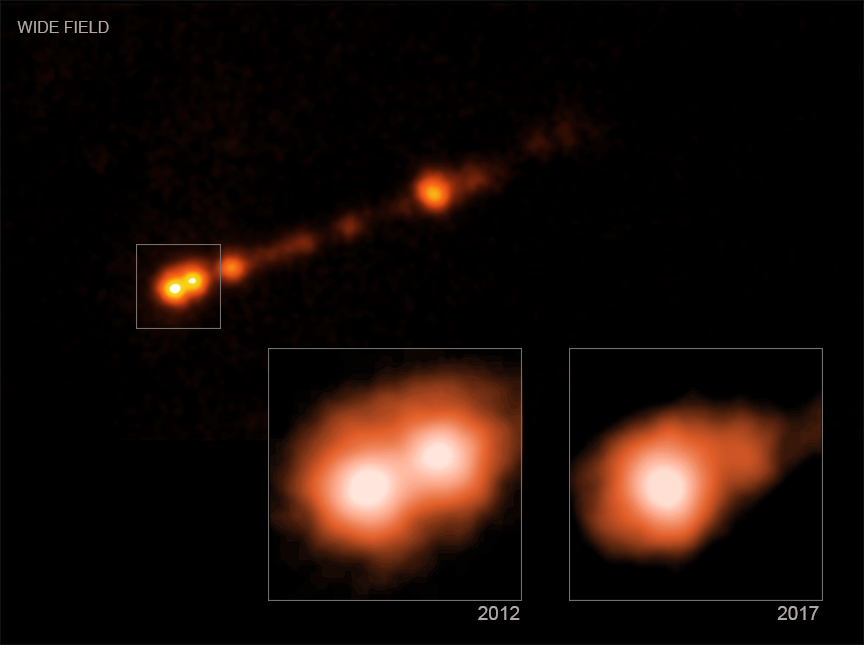
 Credit: NASA/CXC/SAO/B. Snios et al.
Credit: NASA/CXC/SAO/B. Snios et al.
Warp Factor 6?
M87 is a giant elliptical galaxy which dominates the Virgo cluster of galaxies. It's famous now for its central, six billion solar mass black hole whose shadow was recently seen by the Event Horizon Telescope. As matter falls into the black hole, the release of gravitational potential energy powers strong jets of matter on either side of the black hole's accretion disk, blasting into space for millions of light years. This jet emits in radio waves, optical light and X-rays, and because of this X-ray emission it's a favorite target of the Chandra X-ray Observatory. Chandra's high definition cameras provide the best pictures we have of the structure of the X-ray emitting portion of the jet. Chandra has been studying this jet for two decades, and this archive of data provides a unique resource to study how the X-ray emission from the jet evolves with time as the jet blasts its way into intergalactic space.
The image above shows the Chandra X-ray image of the entire length of M87's X-ray emitting jet, which stretches for about 18,000 light years from the black hole (which is located near the bright spot at the base of the jet at the lower left). The jet is not smooth, but shows bright spots of X-ray emission produced by strong outbursts of material from the black hole, due to sporadic, large increases in the amount of matter falling into the black hole. The insets show two observations of the bright spot near the base of the jet from 2012 and 2017. In this timespan, this bright spot has measurably moved outward (and faded in brightness).The distance the X-ray spot moved in these five years apparently shows that this bright spot is moving outward at about six times the speed of light. This "faster than light" motion apparently violates the cosmic speed imit that nothing can move faster than the speed of light, a surprising result. In reality, this is sort of an optical illusion produced by material moving at about 99% of the speed of light combined with the orientation of the jet to our line of sight.
Published: January 27, 2020
<
HEA Dictionary ● Archive
● Search HEAPOW
● Other Languages
● HEAPOW on Facebook
● Download all Images
● Education ● HEAD
>

Each week the HEASARC
brings you new, exciting and beautiful images from X-ray and Gamma ray
astronomy. Check back each week and be sure to check out the HEAPOW archive!
Page Author: Dr. Michael F. Corcoran
Last modified Monday, 26-Feb-2024 17:10:46 EST


